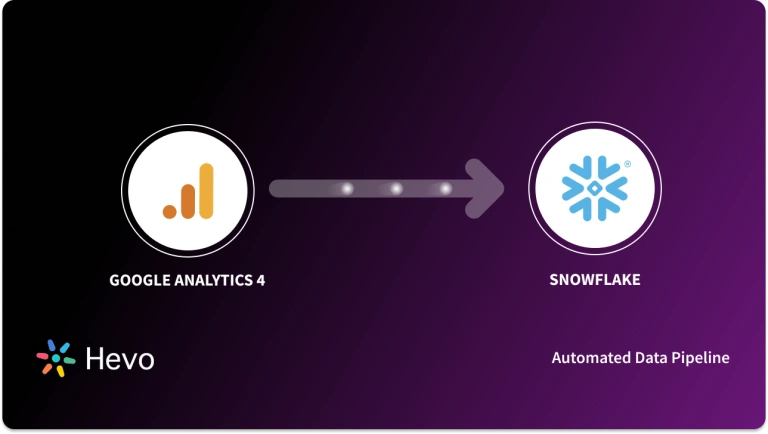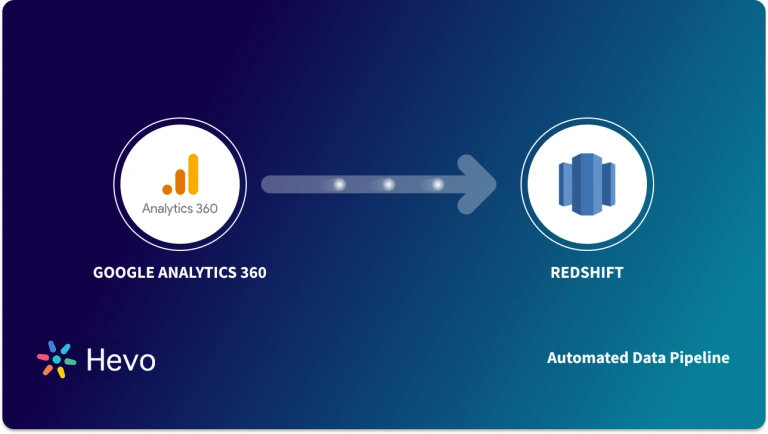As Google Analytics 360 (GA360) and Universal Analytics (UA) move toward the future with Google Analytics 4 (GA4), let’s understand the changes that have taken place to integrate Google Analytics 360 to Snowflake.
360 Universal Analytics Properties
Properties with a current order will receive a one-time processing extension until July 1, 2024.
Universal Analytics
Standard Universal Analytics properties stopped processing data on July 1, 2023. Universal Analytics will be shut down on July 1, 2024, and users will lose access to its data.
Google Analytics 4 is the new version of Google Analytics that collects event-based data from websites and apps.
Table of Contents
Comparison of GA360 and GA4
| Feature | Google Analytics 360 | Google Analytics 4 |
| Data Collection Model | Session-based | Event-based |
| User Interface | Standard reports | Customizable reports |
| Cross-platform Tracking | Limited | Comprehensive |
| Predictive Metrics | Basic predictive analytics | Enhanced predictive features |
| Integration with BigQuery | Native integration | Seamless integration |
Read More About:
Method 1: Connect Google Analytics 360 to Snowflake using Hevo
You can easily automate your data replication process from GA 360 to Snowflake using Hevo Data, which is a No-Code data pipeline platform.
All you need to do is provide access to your respective databases and data warehouses. Hevo simplifies the process for you while you focus on better insights.
Method 2: Manually Connect Google Analytics 360 to Snowflake
This method would be time-consuming and somewhat tedious to implement. Users will have to write custom codes to enable two processes, streaming data from Google Analytics 360 to Snowflake. This method is suitable for users with a technical background.
Get Started with Hevo for FreeWhat is Google Analytics 360?
- Google Analytics 360 is a part of Google’s Analytics 360 Suite, an integrated solution to enhance marketing and customer experience.
- It is one of the most popular platforms that track user engagement and enables you to get meaningful insights. Analytics 360 provides enterprise-level tools for data from all touchpoints to understand user behavior better.
- With Analytics 360, you can also avail a more comprehensive native onboarding list with additions like DoubleClick Bid Manager, DoubleClick Campaign Manager, and DoubleClick Search.
Key Features of Google Analytics 360
GA360 enables you to gather extensive data and get complete insights into your site’s performance and marketing campaigns with the following benefits and features:
- Enhanced Data Freshness and HIT LIMIT: GA360 allows you to start from 500M hits/month compared to only 100M hits for the free version. Furthermore, it enables data processing in just 10-15 minutes (usually) and may take up to 4 hours based on the dataset. This is a significant advantage over the free version, which could take up to 24 hours to do.
- More Integrations: Google Analytics 360 allows you to integrate with BigQuery for super-fast queries of large data sets. You can now easily export all sessions, hit data, and then run any custom queries required. Other than that, GA360 can also integrate with Salesforce Sales Cloud and Google Cloud.
- Custom Funnels: Google Analytics 360 allows you to make Custom Funnels to visualize better how users interact with your website. You can then act based on this information to improve your website’s functionality and reduce inefficiencies.
- Advanced Analysis: This feature allows you to have impactful audience discovery and comparison tools. Drag and drop dimensions and required metrics onto your analysis canvas and export your findings to Google Analytics. You can then compare and contrast different analysis techniques and switch between them accordingly.
- Certified Partner: Google Analytics 360 works as a certified business accomplice to ensure that your enterprise gets the most out of your subscription to Google Marketing Platform. You can always get in touch with their top-of-the-line administrators and get guidance for a market-driven aptitude.
What is Snowflake?

- Snowflake is one of the most popular data platforms which operates as a cloud data warehouse to support multi-cloud infrastructure environments.
- Developed in 2012, the Snowflake platform is a fully managed SaaS (software-as-a-service) that allows you to store and compute while scaling independently.
- The cloud platform offers many unique features like on-the-fly scalable compute, separation of storage and compute (like in BIgQuery), data cloning, data sharing, and third-part tools support.
Main Components of Snowflake
Snowflake comprises three main components: Cloud Services, Query Processing, and Database Storage.
- Cloud Services: Snowflake utilizes ANSI SQL for data management and optimization. These services cover infrastructure management, query parsing, authentication, and metadata management. The platform also maintains PCI DSS and HIPAA certifications for security and data encryption.
- Query Processing: Snowflake’s compute layer consists of virtual cloud data warehouses where you can analyze data via requests. These virtual warehouses are independent and do not compete for resources or affect each other’s performance.
- Database Storage: A database is where an enterprise uploads its structured and semi-structured data for processing and analysis. Snowflake automatically caters to all parts of storing and retrieving, including organization, metadata, structuring, file sizing, compression, and statistics.
Key Features of Snowflake
Snowflake has the edge over other cloud data platforms due to a few distinctive and noteworthy features. These include:
- Cloud Agnostic Solution: Snowflake is a cloud-agnostic solution. It is available on Google Cloud Platform, Amazon Web Services, and Microsoft Azure. It enables you to have similar deployment options and the same end-user experience while leveraging Snowflake into your current cloud architecture.
- Workload Separation: Traditional warehouses have a few concurrency issues, wherein users and processes compete for resources. With Snowflake’s multi-cluster architecture, this issue is completely solved. It separates workloads to be executed via its compute clusters (virtual warehouse).
- Near-Zero Administration: Snowflake does not require any prior software or hardware installation. It is generally delivered as a warehouse service to manage data without much involvement from IT teams or database administrators (DBA).
- Compatible with Storing Semi-Structured Data: Snowflake’s architecture enables you to store structured and semi-structured data at the same destination using the ‘VARIANT’ schema on the read data type. Then, it automatically parses data to extract attributes and stores it in columns. Thus, it eliminates the necessity of data extraction pipelines.
Methods to Connect Google Analytics 360 to Snowflake
Google Analytics 360 provides many actionable and meaningful insights related to your website, but they are still limited by Google’s offerings. If you wish to draw more insights and perform in-depth analysis, you should connect Google Analytics 360 to Snowflake.
Given below are two methods to connect Google Analytics 360 to Snowflake:
- Method 1: Connect Google Analytics 360 to Snowflake using Hevo
- Method 2: Manually Connect Google Analytics 360 to Snowflake
Method 1: Connect Google Analytics 360 to Snowflake using Hevo
Step 1.1: Configure Google Analytics 360 as your Source
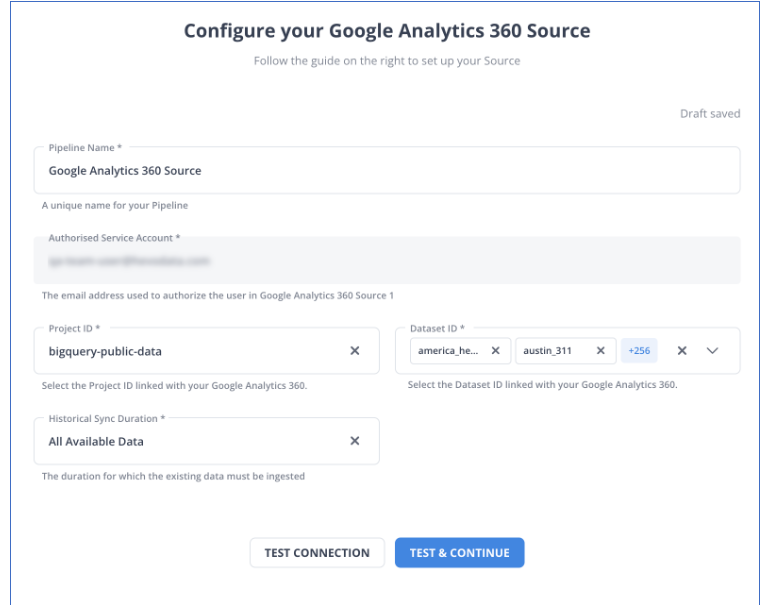
Step 1.2: Configure Snowflake as your Destination
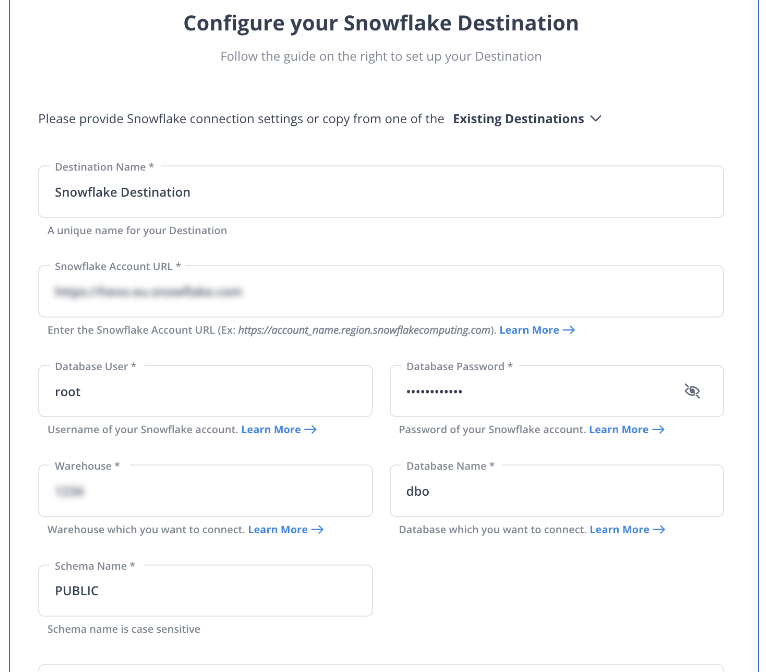
With this, you have successfully connected Google Analytics 360 to Snowflake.
Why use Hevo?
- Smooth Schema Management: Hevo takes away the tedious task of schema management & automatically detects the schema of incoming data and maps it to your schema in the desired Data Warehouse.
- Exceptional Data Transformations: Best-in-class & Native Support for Complex Data Transformation at fingertips. Code & No-code Flexibility is designed for everyone.
- Quick Setup: Hevo with its automated features, can be set up in minimal time. Moreover, with its simple and interactive UI, it is extremely easy for new customers to work on and perform operations.
- Built To Scale: As the number of sources and the volume of your data grows, Hevo scales horizontally, handling millions of records per minute with very little latency.
- Live Support: The Hevo team is available round the clock to extend exceptional support to its customers through chat, email, and support calls.
Method 2: Manually Connect Google Analytics 360 to Snowflake
To manually connect Google Analytics 360 to Snowflake follow the below steps:
Step 2.1: Exporting Data from Google Analytics 360
Follow these steps to export data from Google Analytics 360 for Google Analytics 360 to Snowflake Connection:
- Step 1: Open the desired report to export.
- Step 2: Click on Export.
- Step 3: Choose the format you want to export the file, such as TSV, CSV, Excel, PDF, and more.
- Step 4: Your report is converted into the selected format and is available in the download directory.
Step 2.2: Importing Data into Snowflake
You can follow the steps given below to load data in Snowflake to perform Google Analytics 360 to Snowflake Integration:
- Step 2.2.1: Populate Data into the Warehouse.
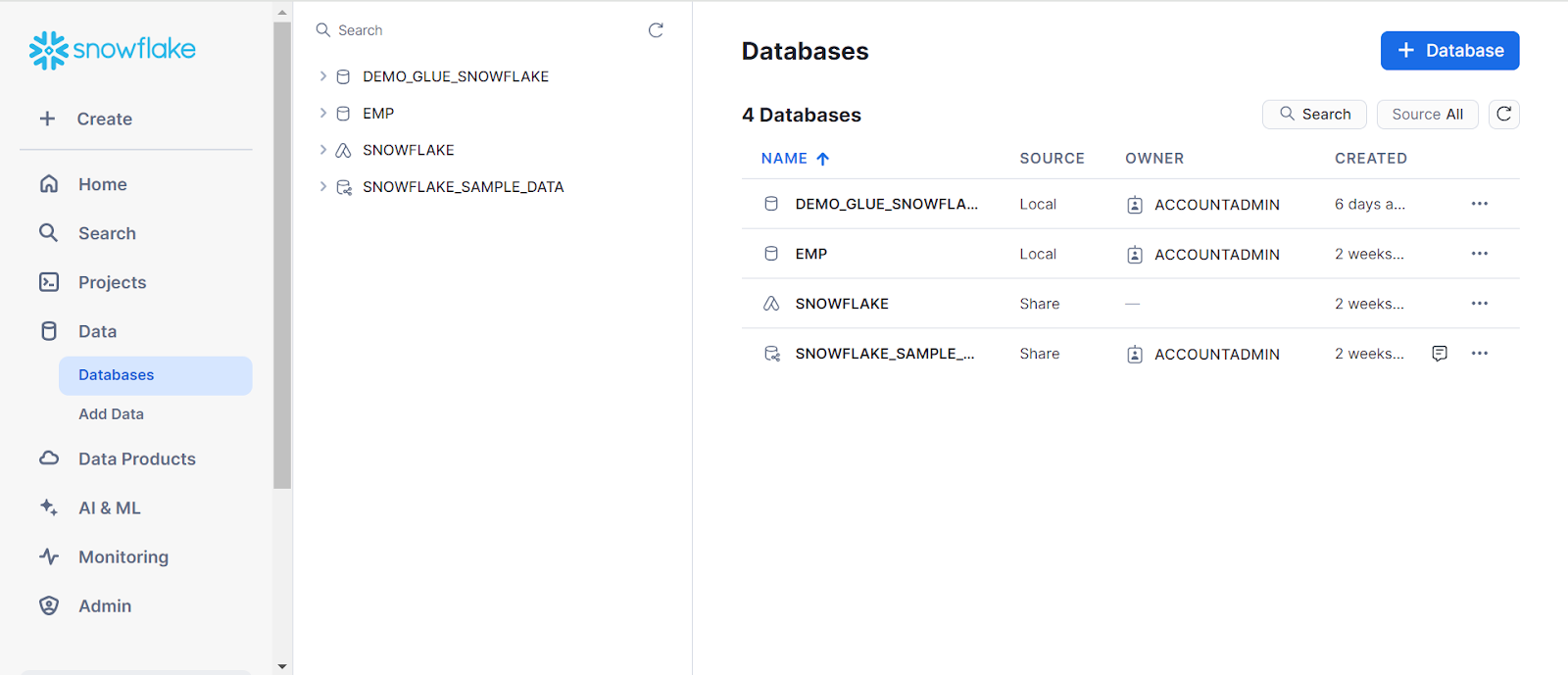
- Click on Data > Databases (on Snowflake homepage).
- To view the content, click on the database link.
- Create a table by either ‘choosing a row’ to load it or ‘choosing the table name’.
- Once you select an option, the loading wizard appears to populate the data into the table.
- Step 2.2.2: Select Preferred Warehouse.
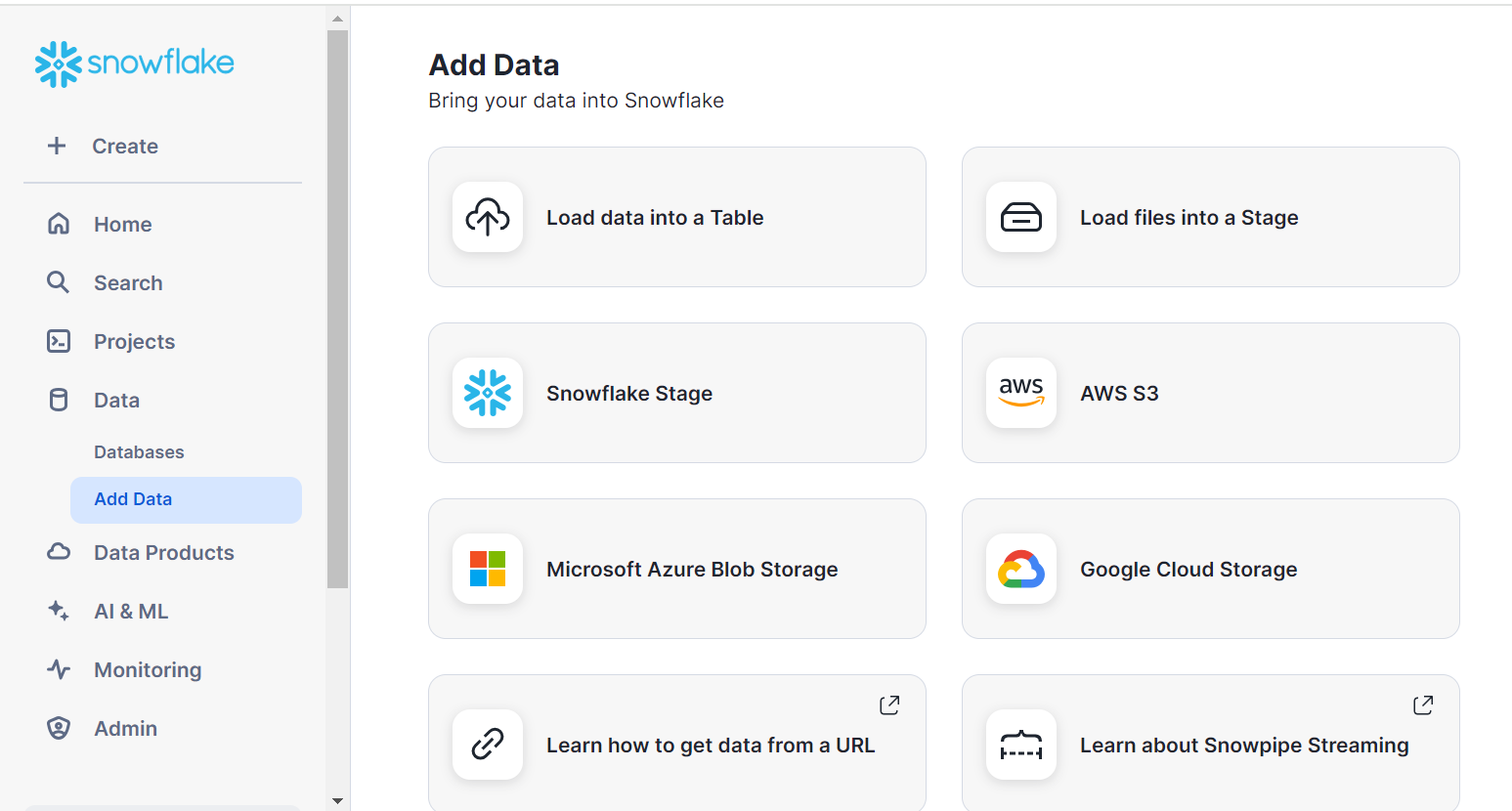
- Using the drop-down menu, select the warehouse.
- Proceed by clicking on Next.
- Step 2.2.3: Loading Files.
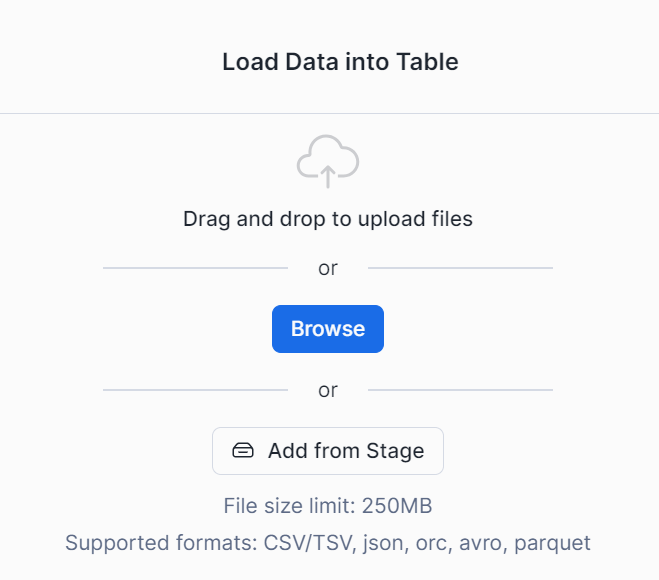
- Click on Load files from your computer > Select Files.
- Once you choose one or more data files, click ‘Open’.
- Press the ‘Next’ key once you are done.
- Step 2.2.4: Selecting a File Format.
- If the file format already exists:
- Choose the preexisting format.
- Click Next.
- For a new File Format:
- Click the plus (+) sign from the drop-down list.
- Fill in the fields that appear on your screen based on the format of your data files.
- Click on Finish.
- Select the new file format you want from the drop-down menu.
- Click Next.
- If the file format already exists:
- Step 2.2.5: Setting Up Load Options.
- Specify an action by Snowflake in case the data files have anomalies.
- From the menu, select Load. Snowflake will use the warehouse of your choice to import data in your chosen table.
- Click OK once you are done. The loading wizard completes the loading data.
You have successfully connected Google Analytics 360 to Snowflake manually.
Limitations of Manually Connecting Google Analytics 360 to Snowflake
- Manual integration of Google Analytics 360 to Snowflake may seem convenient, given the steps, but there are some limitations. Google Analytics 360 Data migration takes a lot of time.
- You must repeat the steps whenever you wish to transfer data from GA360 to Snowflake. The process also becomes a little more complex as it cannot be done in real-time.
- To avoid such challenges, you can always get assistance from third-party ETL providers like Hevo. You have to choose the source and the sink; Hevo will do the rest.
Key Takeaways
- In this article, you learned the benefits of Google Analytics 360 in providing actionable insights regarding your website’s performance and the usefulness of data warehouses like Snowflake, as well as two methods on how to connect Google Analytics 360 to Snowflake.
- These data insights play a significant role in tracking your business’s success. Connecting Google Analytics 360 to cloud data warehouses as Snowflake enables you to use more advanced analytical tools and features.
- To get the most out of your LiveChat and Google Analytics integration, check out our comprehensive guide on LiveChat Google Analytics integration. It includes essential tips and best practices for a smooth integration.
- However, as a Developer, extracting complex data from a diverse set of data sources like Databases, CRMs, Project management Tools, Streaming Services, and Marketing Platforms to your Database can seem to be quite challenging.
- If you are from non-technical background or are new in the game of data warehouse and analytics, Hevo can help!
Sign up for a 14-day free trial and simplify your data integration process. Check out the pricing details to understand which plan fulfills all your business needs.
FAQ on Google Analytics 360 to Snowflake Integration
1. What is GA 360?
GA 360 is the enterprise version of Google Analytics, offering enhanced data accuracy, additional features, and integration with Google’s advertising and cloud products.
2. Is Google Analytics 360 the same as Google Analytics?
Google Analytics 360 is an upgraded version of Google Analytics, providing more advanced features and capabilities suited for large enterprises and high-volume sites.
3. How much does GA 360 cost?
GA 360 pricing typically starts at $150,000 annually, but actual costs can vary based on usage and additional services.






